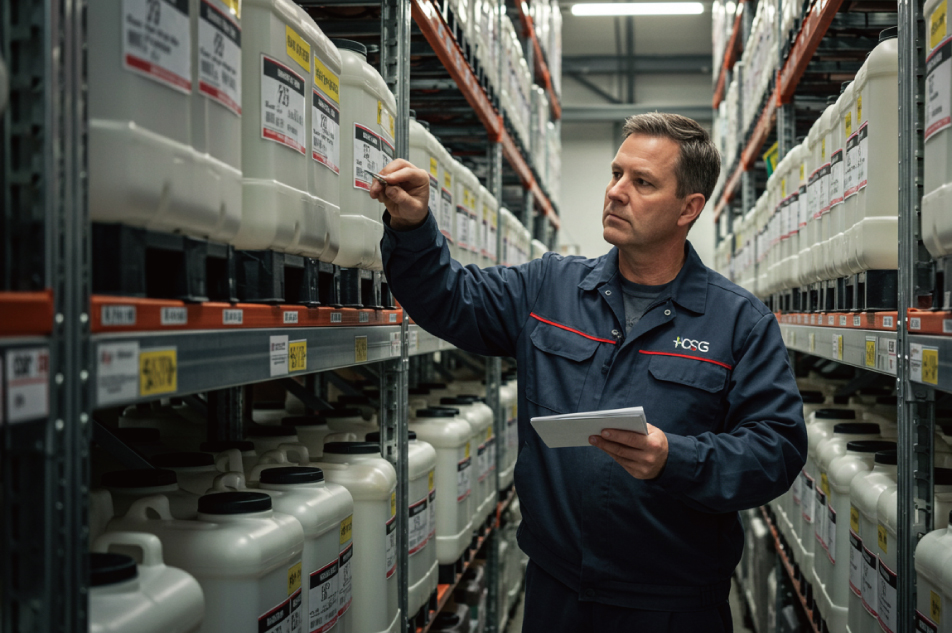What are Hazardous Materials in Warehousing

Hazardous materials (Hazmat) refer to any substance that poses a potential risk to health, safety, or the environment if improperly handled. These include toxic chemicals, flammable liquids, oxidizing agents, corrosive substances, and biohazardous materials.
Identifying Hazardous Materials in the Warehouse
Warehouse personnel must be vigilant when dealing with incoming shipments and carefully review labels and documentation to ensure proper classification. Key identification practices include:
- Label Inspection: Look for caution, warning, or danger labels on containers. These indicators are often the first alert to a potentially hazardous item.
- Safety Data Sheets (SDS): Ensure all incoming hazardous shipments include SDS for clear information on handling, potential risks, and emergency measures.
- UN List Reference: Cross-check items against the UN list of dangerous goods to confirm classification and handling requirements.
Correct identification ensures that hazardous materials are handled appropriately and stored according to their specific needs, minimizing risks to warehouse personnel.
Hazardous Materials Storage Requirements
Proper storage protocols for hazardous materials are essential to maintaining a safe warehouse environment. Standard requirements include:
- Segregated Storage: Store hazardous materials separately from regular inventory to minimize contamination and exposure risks.
- Accessible SDS: Keep SDS documentation readily available within the storage area for quick reference in case of an incident.
- Inventory Management: Maintain a separate inventory for hazardous materials to track quantities, expiration dates, and disposal records.
- Spill Control Equipment: Have spill response kits and protective gear on hand for prompt spill containment.
- FIFO System: Use the "First In, First Out" method to reduce the risk of storing expired hazardous items.
Types of Hazardous Materials and Safe Handling Practices
1. Toxic and Corrosive Substances
- Sealed and Marked: Toxic items must be properly sealed and clearly labeled, with designated areas in the warehouse.
- Handled with PPE: Personnel must wear gloves, masks, and protective clothing.
- Stored Separately: Corrosive substances, such as acids and bases, should be stored separately to prevent chemical reactions.
2. Flammable and Combustible Liquids
- Isolated Storage Area: Store flammable materials in a dedicated area at least 10 meters from the main warehouse.
- Ventilation: Ensure proper airflow to prevent fume buildup and reduce fire risks.
- Clear Marking: Label storage areas and containers with flammable warnings.
- Fire Safety: Install Class B and Class C fire extinguishers and inspect them regularly.
3. Pressurized Containers
- Stable Positioning: Secure containers upright to prevent tipping and ruptures.
- Temperature Control: Store away from heat sources to prevent pressure buildup.
- Valve Protection: Cover valves to avoid accidental damage during transport.
4. Oxidizing Agents
- Separate from Combustibles: Store oxidizers away from flammable materials.
- Protective Storage: Use corrosion-resistant shelving.
- Routine Inspections: Regularly check for signs of oxidation damage.
5. Biohazardous Materials
- Access Restriction: Limit access to trained personnel only.
- Temperature Control: Store biohazards at specified temperatures.
- Secure Containment: Seal and label containers properly.
Spill Prevention and Response Protocols
Spill Prevention
- Regular Inspections: Routinely check containers for wear, leaks, or damage.
- Proper Labeling: Ensure accurate labeling to avoid mishandling.
- Use of Compatible Storage: Use containers suited for the material's chemical properties.
Spill Response
- Alert Personnel: Evacuate the area if the spill involves flammable or toxic substances.
- Containment: Use absorbent materials to contain the spill.
- Protective Gear: Wear appropriate PPE, including gloves, masks, and face shields.
- Dispose of Hazardous Waste: Seal contaminated materials and arrange for certified hazardous waste disposal.
Compliance with Regulatory Standards
Warehousing hazardous materials requires strict adherence to local and national regulations:
- Adhering to Storage Limits: Follow quantity restrictions and regulations.
- Clear Signage: Use hazard signs to inform staff and visitors.
- Training and Certification: Ensure staff handling hazardous materials undergoes regular training.
- Documentation: Maintain detailed records of hazardous material inventories and disposal logs.
Best Practices for Hazardous Materials Storage
- Regular Training: Educate staff on handling and emergency procedures.
- Dedicated Storage Facilities: Create separate areas or buildings for hazardous materials.
- Use of Safety Barriers: Install barriers to prevent accidental exposure.
- Monitor Expiration Dates: Regularly check for expired hazardous materials.
Conclusion
Properly managing hazardous materials in a warehouse setting involves strict handling protocols, robust safety measures, and compliance with regulations. By following best practices, warehouses can ensure the safety of their personnel and prevent environmental risks.
Do you need more information?
Our team of experts will be happy to help you with any questions you may have.
More information